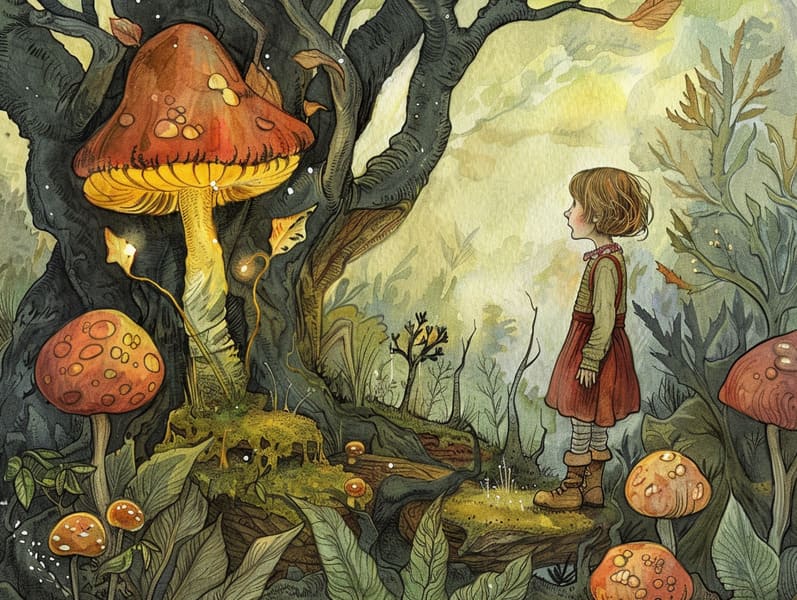Discovering the Enchantment of Sleepy-time Adventures: Creating Valued Experiences with Your Loved Ones
Discovering the Enchantment of Sleepy-time Adventures: Creating Valued Experiences with Your Loved Ones
Blog Article

Bedtime is a precious time for families. It’s a occasion to calm down, cuddle up, and share the joy of sleepy-time tales.
For ages, evening stories for little ones have been a valued tradition, offering more than just a way to nod off. They provide an chance for relationship building, discovery, and igniting vision.
Understanding the Importance of Bedtime Stories
Sleep stories for kids go beyond a way to close the day. They play a important role in a child’s evolution and in nurturing the adult-child bond. Here’s why they are important:
1. Quality Time: Reading together at bedtime develops a special bonding moment between caregivers and children. It’s a moment of proximity that helps children feel appreciated and content.
2. Vocabulary Building: Absorbing tales helps children develop their communication skills. They understand new phrases, understand form, and refine their comprehension and analytical skills abilities.
3. Imaginative Skills: Bedtime tales take them to dreamy worlds, encouraging vision. They imagine characters, settings, and adventures, which powers their imagination.
4. Emotional Intelligence: Nighttime tales often involve characters facing difficulties and moods. These plots help kids handle and navigate their own emotions, encouraging emotional intelligence.
5. Cognitive Development: Listening to a tale helps children develop attention span, recollection, and reasoning skills. They improve to follow tales, remember facts, and foresee consequences.
How to Make Bedtime Stories a Routine
Forming a sleep-time routine that has storytelling is straightforward and fulfilling. Here’s how to create a valued part of your bedtime ritual:
1. Select a Comfortable Location: Find a quiet place where you and your child can nestle in without disruptions. A comfy bed or a quiet reading nook works ideally.
2. Choose a Specific Time: Fix a consistent time each night for narratives. Regularity helps children be ready and makes the tradition simpler to continue.
3. Pick Age-Suitable Stories: Identify tales that match your child’s developmental stage. Young kids might be drawn to visual books with basic stories, while school-age kids may like books with chapters with more complicated tales.
4. Engage with the Story: Make sure the tale become real by doing different tones and voices, adding special sounds, and motivating your child to engage. Ask stuff about the story to hold their attention.
5. Make a Peaceful Setting: Turn down the lights, use hushed tones, and create a relaxing environment to help your child calm down.
Finding Excellent Bedtime Stories
There are varied options where you can find amazing bedtime stories for children. Here are some ideas to think about:
1. Kids’ Books: Look at your local library or bookstore to find a large selection of bedtime stories for kids. Going through the books together can be a delightful activity that also helps children to get stories that they like.
2. Web Sources: There are many websites that offer free bedtime stories. Sites like free story websites provide a variety of short stories for kids that you can download. These platforms are great for finding new and unique stories without paying.
3. Audiobooks and Apps: For nights when you’re too drained to read, try audiobooks or storytelling apps. These can provide a quiet narration to read your child a story, ensuring they still get their bedtime story fix. Apps often offer interactive parts that can involve them further.
4. Individualized Stories: Make your own stories fitting your child’s experiences. Personalized stories can be extremely engaging and meaningful. You can get your child in the creation process, making them a part of the adventure.
Short Story Benefits
Short stories for kids are extremely helpful for bedtime. They provide all the plusses of longer stories but are more short, making them perfect for preparing for sleep before sleep. Here’s why short stories are a good choice:
1. Straightforward: Quick stories are straightforward and effortless for children to follow, even after a long day. They can quickly grasp the story and enjoy the story without losing interest.
2. Immediate Attention: Quick narratives rapidly engage children, keeping their interest and creativity. This makes them great for keeping bedtime rituals easy yet enjoyable.
3. Many Choices: Brief tales allow for variety in your bedtime books. You can get a different story each night, keeping the ritual new and exciting for your child.
4. Time Efficiency: For busy parents, quick stories are a time-efficient way to verify children still get their nightly dose of storytelling. They fit well into a busy schedule while still offering the full good points of a bedtime story.
The Satisfaction of "Read Me a Story"
The simple phrase, “Tell me a story,” can reveal a world of magic for children. Agreeing to this request not only satisfies a child’s request for attention and engagement but also forms lasting memories. Here’s why it’s amazing:
1. Link: Narrating check here to your child creates a deep emotional connection. It’s a time for attachment, sharing, and bonding.
2. Custom: Forming a bedtime story ritual creates a important tradition that children expect every night. It’s a habit that can be shared through generations.
3. Mutual Learning: As you share stories, you’ll notice your child’s growth and learning. Their responses, reactions, and understanding of the stories advance, offering insights into their developing minds.
4. A Safe Haven: Bedtime stories provide a safe space for children to deal with emotions, face fears, and find comfort in the trusted presence of a parent.
Finishing Thoughts
Sleep stories for kids are a essential tool for developing a child’s evolution and building unforgettable experiences of bonding.